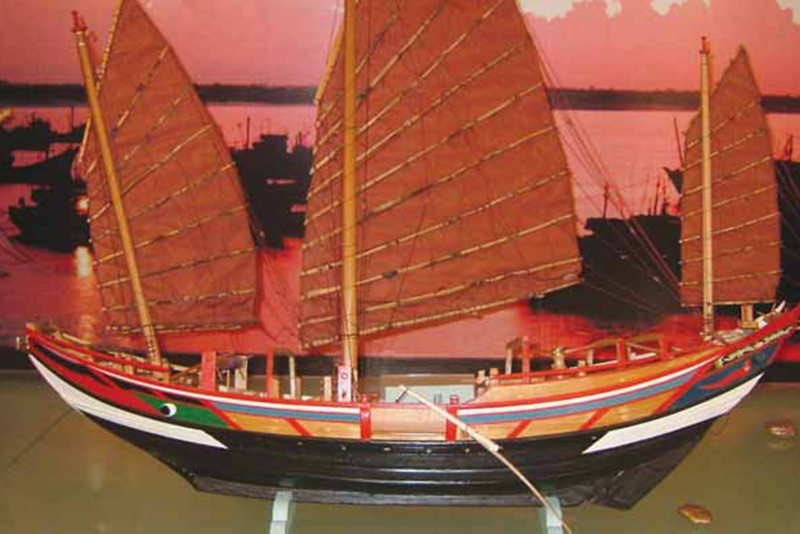
A ship utilizing the watertight-bulkhead technology. [Photo/fujian-szwhg.chaoxing.com]
The Watertight-bulkhead Technology of Chinese Junks is distributed throughout the Jinjiang and Ningde regions of Fujian province. This traditional craft was included in the second batch of representative national-level intangible cultural heritage items in 2010 and made the UNESCO Urgent Safeguarding List of Intangible Cultural Heritage.
Historical records prove that as early as the late Southern Song Dynasty (1127-1279), the watertight compartment structure in ships built in the Quanzhou region had reached a high level of perfection. Shipbuilding techniques in Zhangwan, Ningde, have a history of over 650 years. They were introduced to Qihou village in Zhangwan town during the reign of Emperor Hongwu (1368-1398) in the Ming Dynasty and have been passed down through generations.
The so-called watertight-bulkhead technology, which divides a ship's compartments into smaller sections using bulkheads, offers three advantages.
Firstly, in case of individual damage during navigation, repairs and sealing of the damaged area can allow the ship to continue sailing, thus enhancing safety. Secondly, goods can be stored in separate compartments, facilitating loading, unloading, and management. Thirdly, the close connection between the thick bulkheads and the ship's hull plates strengthens the ship's structure, simplifies shipbuilding processes, and improves the ship’s overall buoyancy.
In the late 13th century, watertight-bulkhead technology was introduced to the West by Marco Polo. In 1795, Samuel Bentham, chief engineer of the British Navy, first used the watertight compartment technology pioneered by the Chinese to build a new type of warship. Since then, watertight compartment technology has gradually been adopted by the global shipbuilding industry, having a significant impact on maritime history.

Copyright © General Office of Fujian Provincial People's Government
Website Identification Code 3500000049Registration Number: 15003084
All rights reserved. The content (including but not limited to text, photo, multimedia information, etc) published in this site belongs to fujian.gov.cn.
Without written authorization from fujian.gov.cn, such content shall not be republished or used in any form.